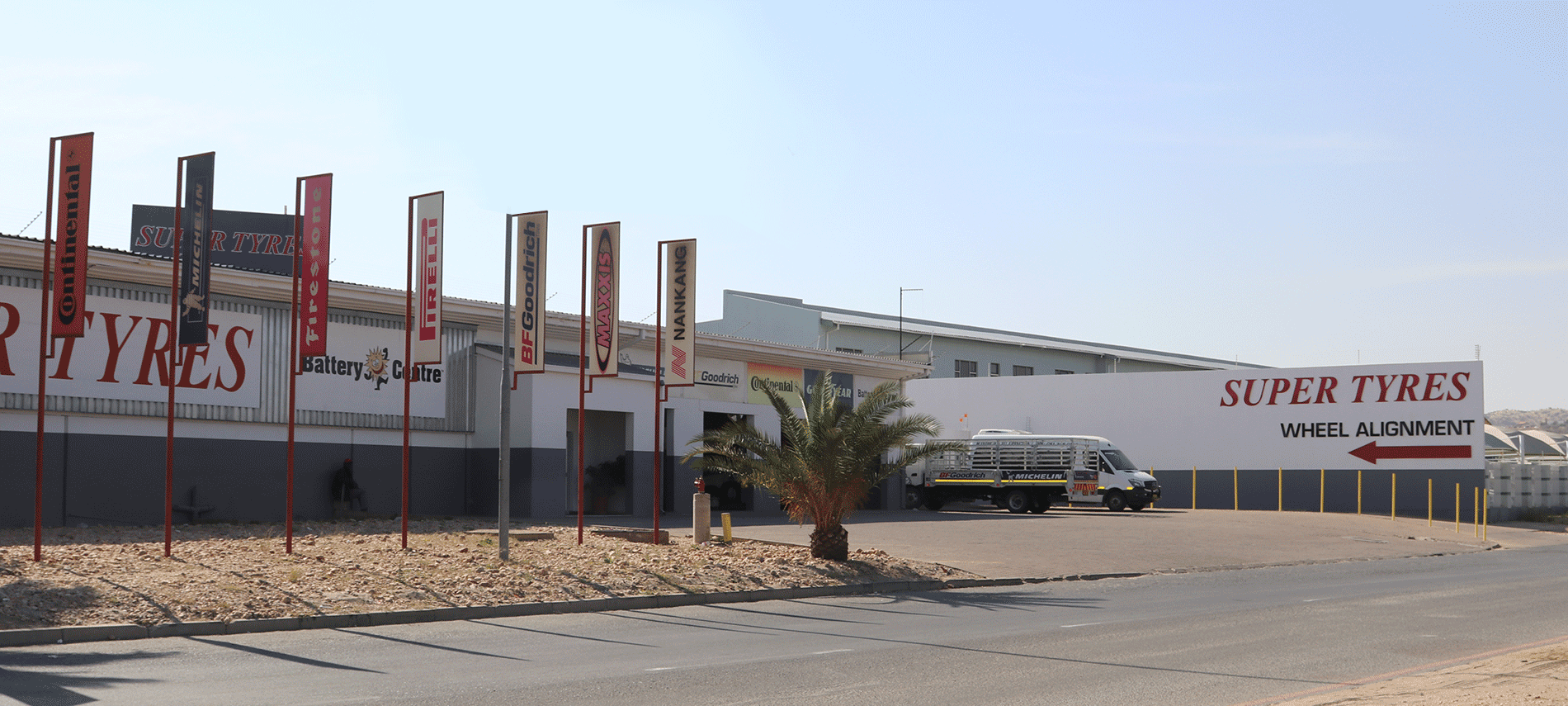-
 SAFETYMake it your Priority
SAFETYMake it your Priority
69 Hosea Kutako Drive, Windhoek, Namibia
+264 61 262991
andre@supertyres.com.na
15 Dr Michael de Kock Street Northern Industria, Windhoek, Namibia
+264 81 475 8121
christa@supertyres.com.na
Choose your vehicle tyres carefully. Too many drivers buy tyres based on initial price or appearance. Tyre selection should be according to fabric specifications. Specifications are based on the correct size recommended for the vehicle and its loading recommendations and speed index for that vehicle. You should consult with our tyres professionals about selecting the proper tyre for your vehicle and driving patterns.
- Check your vehicles tyre pressure at least once a month, and especially before a long trip.
- Tyre pressure should be checked when they are cold.
- The correct inflation pressure is provided in the owner’s manual of your car, OR located on a placard usually on the inside edge of the driver’s door, or the inside of the fuel cap.
- Remember that temperature affects pressures. Never adjust the pressure immediately after driving, because driving heats up the tyres.
- Remember to check the pressure on your spare tyre regularly too.
- Uneven inflation between tyres affects the driving qualities of your vehicle and makes the tyres wear unevenly.
- Inflate your tyres with Nitrogen to increase the safety and lifetime of your tyres. With Nitrogen in the tyres your tyres will run 21% cooler!
Although the minimum amount of tread required for a car to be roadworthy is 1.6 mm, it’s wise to replace tyres at 2 mm, as wet-weather grip is diminished when there is only a small amount of tread.
To check tread depth:
Every tyre comes with a tread depth indicator, which is in the tread grooves. When the tread is even with the tread indicator it is time for replacement. Or put a match head into the tread grooves, and if any part of the head shows above the grooves it’s time to replace the tyre. Or go to your tyre dealer and ask them to check your tyres.
- Rotate your vehicle's tyres between the front and rear axles after every 10,000 kilometres as the tyres wear differently in different positions. Remember to check tyre pressures when changing tyres.
- Do wheel balancing every 10,000 km. Regular wheel balances ensure your tyres run smoothly on the road which helps to improve your vehicle’s control, especially on wet roads.
- If your tyres show uneven wear, ask our service professional to check for and correct any misalignment, imbalance or other mechanical problem involved before rotation.
- Check your vehicle alignment periodically. It’s especially important to have a professional check your vehicle alignment if you notice your vehicle is pulling to one side when you’re driving.
- Wheel alignments, balancing and rotations maximise the life of your tyres by ensuring your tyres wear evenly.
The condition of your tyres is important for driving safety. By following these golden rules, you can ensure top mileage, safe performance and a longer useful life for your tyres.
- Check Tyre Pressure.
- Check tread depth.
- Do rotation.
- Do wheel balancing.
- Clean dirt from around valves and fit dust caps all round.
- Clean dirt from the tread and remove stones and other foreign objects.
- Check tyres for defects, tears, lumps and bumps which could render the tyre defective and potentially dangerous.
- Uneven tyre wear may mean steering misalignment or out of balance wheels which can lead to steering difficulties.
- Check the tyre age - tyres more than eight to ten years old should be replaced.
- Check the spare wheel.
- Drive smoothly. Panic braking and side-slips shorten the useful life of tyres and this is particularly true of studded tyres.
- During wet weather, slow down. As your speed decreases, the tyre footprint (the amount of the tyre’s tread that is in contact with the road surface) increases, providing better traction. You also reduce the risk of hydroplaning should you run into deeper water puddled on the road.
- Make sure you do not overload your vehicle because it can create excessive heat inside your tyres. An overloaded vehicle puts stress on tyres that can cause damage and lead to tyre failure.

